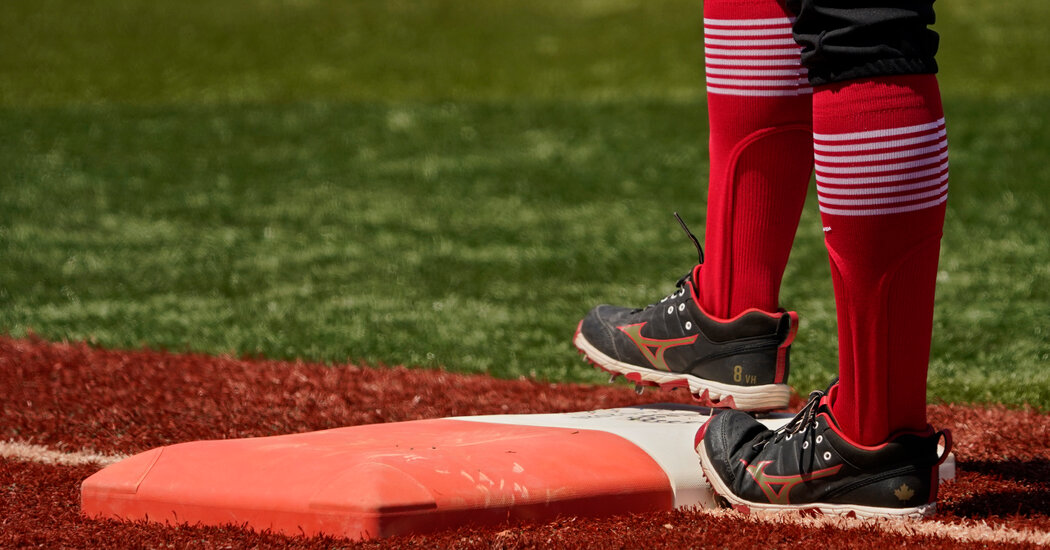
Some coaches and administrators also fear that the double base, sometimes called a safety base, could fuel perceptions that softball is a weaker, more delicate sport than baseball.
Field dimensions, though, yield drastically different dynamics of speed and power than in baseball, which can make softball perilous. In college softball, for instance, the pitcher’s plate is 43 feet from home; in baseball, the rubber is 60 feet, 6 inches from home. First base is 90 feet from home in baseball, but just 60 feet in softball, where plays at first often end after about 3 seconds. (“I see in baseball how long it takes to get to the bag,” Richardson said wryly.)
Both sports have grappled with how to protect players around the bases, and the double base has appeared on some youth baseball fields across the country. Major League Baseball, partly in pursuit of safety but also in desire of more steals and eyeball-attracting offense, is expected to deploy larger bases next season, taking them from 15 square inches to 18 but stopping well short of the double base that has been woven into international softball for decades.
The double base has been used in all five Summer Games that have included softball, which made its debut as an Olympic sport in 1996 but has already entered its second hiatus. In the United States, the organization that governs competition for more than 2 million players has mandated its use in games since 2005.
State high school associations and the N.C.A.A., though, set their own policies, and the N.C.A.A., whose softball rules are written by coaches, commissioners and others closely tied to the game, has become the holdout with the highest profile.
“We should be setting the pace in a lot of things, and in that, we’re not,” Alabama Coach Patrick Murphy said with a mix of frustration and fury.